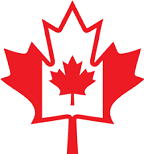







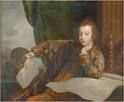


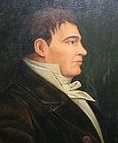





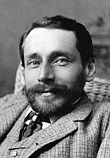

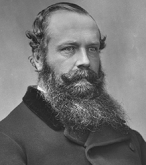




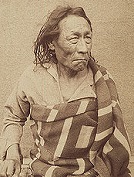
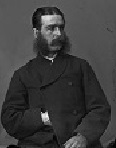




























TLW's Canadascope™ (Canada Historyscope) |
By T.L. Winslow (TLW), the Historyscoper™ |
© Copyright by T.L. Winslow. All Rights Reserved. |
Original Pub. Date: June 8, 2018. Last Update: Aug. 10, 2018. |




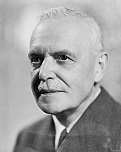



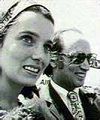








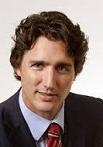
Westerners are not only known as history ignoramuses, but double dumbass history ignoramuses when it comes to Canada and Canadian history. Since I'm the one-and-only Historyscoper (tm), let me quickly bring you up to speed before you dive into my Master Historyscope.

In 1001 after Icelandic Viking anything-goes-man Leif Ericson (Ericsson) (970-1020), son of Erik the Red buys Bjarni Herjulfson's ship (knarr) and sails with a 35-man crew from Greenland in a SW direction, he runs into North Am., first at Baffin Island, which he calls Helluland ("land of flat stones"), then Labrador, which he calls Markland ("land of forests"), and finally Newfoundland, which he calls Vinland the Good ("land of grapes/berries/meadows"), a place where wild grapes and wheat are seen growing; they winter there, building a village of "big houses", encountering the Beothuk people; in 1960 Helge Ingstad finds evidence of Vinland in L'Anse aux Meadows (Fr. "L'Anse-aux-Meduses" = jellyfish cove) in Newfoundland; did they bring back native women?

On Apr. 20, 1534 Saint-Malo, Brittany-born French explorer Jacques Cartier (1491-1557) begins his First Voyage to North Am., arriving in the New World on May 20, crossing the Strait of Belle Isle and exploring Newfoundland; on June 24 he lands at Gaspe (Gaspé), Quebec, claiming Canada (Iroquois "Kanata" = "group of huts") for France, erecting the 30-ft.-high granite Jacques Cartier Cross (Cross of Gaspé) overlooking the Bay of Gaspe on July 24, with the inscription "Long live the king of France", which is rebuilt in granite in Gaspe, Quebec on July 24, 1534; on Aug. 10 (Feast of St. Lawrence) he discovers the Gulf of St. Lawrence (named after 3rd cent. St. Lawrence), sighting the coast of Labrador and Prince Edward Island, then explores the St. Lawrence River.
In 1535 Jacques Cartier makes his Second Voyage to North Am., taking the St. Lawrence River to visit the Canadian Indian settlement which in 1608 becomes Quebec (Algonquin "shut-in place, narrow passage, strait") (modern-day pop. 8M); he also visits an Indian settlement at the foot of Mount Royal, future site of Montreal. On May 3, 1536 Cartier orders his men to abduct Iroquois Chief Donnacona (-1539) from the village of Stadacona on modern-day Quebec City to take him back to France with them so he can tell the king his stories of the splendors of the New World; he dies in France in 1539; Cartier first uses the name Canada in his writings - Donna, Donna, my Donnacona? On May 23, 1541 Jacques Cartier begins his Third Voyage; in summer he and the Sieur de Roberval attempt to found the Charlesbourg-Royal settlement on the St. Lawrence River near the mouth of the Cap-Rouge River with 400 colonists; in Sept. 1543 after Indian raids, scurvy, and bad weather, it is abandoned.
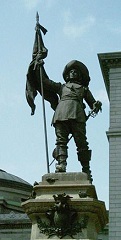
On May 17, 1642 the city of Montreal (originally Ville-Marie) in SW Quebec, Canada at the foot of Mount Royal on the S shore of Montreal Island in the St. Lawrence River (modern-day pop. 1.7M/3.5M) is founded by a group of French colonists led by Paul de Chomedey, Sieur de Maisonneuve (1612-76) on the site of an Iroquois encampment; too bad, the Iroquois don't like it, and begin attacking it, reducing the pop. to 50 by 1653 when 100 volunteers arrive to save it, after which the pop. rises to 600 by 1685, living mainly by the fur trade.
In 1642 French missionaries hold services for 2K Ojibwas at the NE end of Michigan's Upper Peninsula on the U.S.-Canada border 346 mi. from Detroit on the future site of the city of Sault Sainte Marie, Mich. (Fr. "St. Mary's Falls") (modern-day pop. 14K), giving the French dibs to the area; twin city Sault Sainte Marie, Ontario on the other side of the St. Marys River (modern-day pop. 73K) is separated after the War of 1812 establishes the border at the river.


In July 1673 Ft. Frontenac is founded on the mouth of the Cataraqui River on the St. Lawrence River near modern-day Kingston, Ontario, Canada by Rene-Robert Cavalier, Sieur de La Salle (1643-87), who gave away his father's fortune to join the Jesuits and sailed for New France in spring 1666, hoping to find a western passage to China. In early 1679 he builds Fort Conti at the mouth of the Niagara River on Lake Ontario; on Aug. 7 he launches the 7-cannon 45-ton Le Griffon, which becomes the first full-sized ship to sail across the Great Lakes in a quest for the Northwest Passage, reaching an island in Lake Michigan, where La Salle disembarks with 26 of 32 men, sending the rest back to Niagara with a load of furs, after which it disappears in Green Bay, Wisc.; in Sept. 1679 he sails on a barque with Father Louis Hennepin (1626-1705) to Lake Erie, Lake Huron, and Michillmackinac, discovering Niagara Falls, then sails through the Detroit River to Green Bay, ditching the barque and switching to canoes, paddling down the W shore of Lake Michigan to the mouth of the Miami (St. Joseph) River, building Fort Miami on the shores of Lake Superior near modern-day Duluth, Minn. in Jan. 1680, and leaving on Dec. 3, reaching modern-day South Bend, Ind., then crossing the Kankakee River to the Illinois River, building Fort Crevecoeur near modern-day Peoria, Ill., surviving a mutiny and canoeing down the Mississippi River in 1682, naming Louisiana after Louis XIV and claiming the entire territory for him, then building Fort Saint Louis at Starved Rock on the Illinois River to replace Fort Crevecoeur before leaving for France, returning on July 24, 1684 with a large expedition incl. four ships and 300 colonists, founding Fort Saint Louis on Garcitas Creek in modern-day Victoria, Tex., claiming Texas for France; too bad, while searching for the mouth of the Mississippi River, La Salle is ambushed and killed on Mar. 19, 1687 by Pierre Duhaunt in modern-day Navasota, Tex, after which his fort on the Illinois River is later taken over by John Jacob Astor's fur trading co.

 In Apr. 1690 after Schenectady, N.Y. is attacked by a force of French and Indians, who burn it, kill 60 settlers, and take 30 captives to Canada, beginning the first of four
French and Indian Wars (ends 1763) between the French and British in North Am. over control of Canada and the
region W of the British colonies on the Atlantic seaboard, he English under Sir William Phips (1651-95)
defeat the French in Acadia;
in Aug. Phips unsuccessfully attacks Quebec under the command of Comte de Thunder Rock, er,
Louis de Buade de Frontenac (1622-98),
who orders a French attack on Boston and other British coastal ports; on Dec. 10 to pay the troops the Mass. Gen. Court authorizes the printing of
paper currency, becoming the first in Western history?
In 1696 Hatter journeymen strike in England.
The French in Canada under Comte de Frontenac decisively defeat the Iroquois.
In Apr. 1690 after Schenectady, N.Y. is attacked by a force of French and Indians, who burn it, kill 60 settlers, and take 30 captives to Canada, beginning the first of four
French and Indian Wars (ends 1763) between the French and British in North Am. over control of Canada and the
region W of the British colonies on the Atlantic seaboard, he English under Sir William Phips (1651-95)
defeat the French in Acadia;
in Aug. Phips unsuccessfully attacks Quebec under the command of Comte de Thunder Rock, er,
Louis de Buade de Frontenac (1622-98),
who orders a French attack on Boston and other British coastal ports; on Dec. 10 to pay the troops the Mass. Gen. Court authorizes the printing of
paper currency, becoming the first in Western history?
In 1696 Hatter journeymen strike in England.
The French in Canada under Comte de Frontenac decisively defeat the Iroquois.
In summer 1691 Peter Schuyler leads a force of English and Dutch colonists from Albany to La Prairie, on the Richelieu River S of Montreal, causing French gov. Callieres to send 700-800 soldiers to oust them, but Schuyler's men ambush them before dawn on Aug. 11 in a rainstorm in the Battle of La Prairie, causing them to withdraw, after which 160 more French troops block their way back, causing a vicious hand-to-hand struggle before making it through, sustaining so many casualties that they are forced to return to Albany.
In 1691 Hudson's Bay Co. explorer Kelsey sees Am. bison (buffalo).
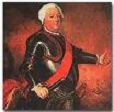



You get this, I get that, now who wants lemonade? On Apr. 13, 1713 the Treaty (Peace) of Utrecht, signed by France on the one hand, and England, Holland, Prussia, Savoy, and Portugal on the other, followed by more treaties signed on July 13 between Spain and England, and more on Aug. 13 between Spain and Savoy (and more in 1714 and 1715), all concluded by Viscount Bolingbroke against the wishes of nearly the entire English nation ends Louis XIV's wars, Queen Anne's War (Second War of the Grand Alliance) (begun 1701), and the War of the Spanish Succession (begun 1700), with the uniting of France and Spain under one king permanently forbidden, and the whole idea being to check France's ambitions by pumping up Ahnuld, er, Austria and Holland on its N, Prussia on its E, and Savoy on its SE, launching the inevitable process of unification of Germany and Italy in the 19th cent., while freeing England for fast commercial expansion; it recognizes the Protestant succession in England, the title of Philip V as king of Spain and the Spanish colonies, and cedes from Spain the Spanish Netherlands (that part which had belonged to the Hapsburgs), and cedes Minorca and Gibraltar to England, along with Hudson Bay, Nova Scotia (Acadia), and Newfoundland in Canada, and St. Christopher (Kitts) and Nevis, allowing France to retain Quebec; Port Royal is renamed Annapolis Royal in honor of Queen Anne, and remains capital of Nova Scotia until 1750; Prussia receives recognition of the royal title and possession of Neuchatel and the upper quarter of Gueldres, while its claim to the principality of Orange on the Rhone River (which gives its name to the Dutch royal line) is ceded to France; Portugal receives expanded boundaries in South Am.; Sicily is separated from Naples and given to Savoy (until 1720), along with territory in upper Italy in return for renouncing its claims on Spain, reserving the right of inheritance in case the House of Bourbon should become extinct; Count Wirich Philipp von Daun becomes the first Austrian viceroy of Naples; the Iroquois are recognized as British subjects; Britain obtains the asiento (monopoly of slave trade) with Spanish possessions for 30 years; France gains the college town of Douai; England emerges ascendant on the sea over France and the Netherlands, and Euro politics becomes all about Anglo-French and Austrian-Prussian rivalry, with Russia, Spain, Holland, Sweden, and the smaller German states playing both sides; French-speaking English poet-diplomat Matthew Prior (1664-1721), who helped England negotiate the 1697 Peace of Ryswick and was called back to negotiate the Peace of Utrecht gets saddled with the blame as "Matt's Peace" even though he personally disapproves of it, and after Queen Anne dies next year Robert Walpole gets him impeached and placed under house arrest in 1715-7, causing him to turn back to poetry; John Churchill, 1st Duke of Marlborough talks them into an exchange for a swap of his Principality of Mindelheim in Unterallgau, Bavaria with the county of Nellenburg (Mellenburg) in Austria, promoting it into a principality for him; too bad, Austrian law forbids it, and the plan is dropped in 1717.

Trying to get that view of that booty? In 1731 French Canadian explorer Pierre Gaultier de Varennes, Sieur de La Verendrye (Vérendrye) (1685-1749) and his four sons incl. Francois de La Verendrye (Vérendrye) (1715-94) and Louis-Joseph Gaultier de La Verendrye (Vérendrye) (1717-61) begin exploring French territory W of the Missouri River (until 1742), going on to discover the Dakotas, W Minn., part of Montana, Manitoba, and Western Canada, becoming the first white Euros to reach N.D. and the upper Missouri River; in 1739 Francois and Louis-Joseph discover the Saskatchewan River, and explore the Great Plains as far as Wyo. and in 1742-3 become the first white Euros to see the Rocky Mts. N of N.M.; the 253-acre Verendrye Nat. Monument in W N.D. is protected by the U.S. in 1917-56.
On June 1, 1749 Francois Piquet founds a mission at Oswegatchie (Ogdensburg), N.Y. at the confluence of the Oswegatchie and St. Lawrence Rivers (modern-day pop. 11K), which attracts many Iroquois to the French side; on June 21 Father Le Loutre's (Anglo-Micmac) (Indian) War begins when Gen. Edward Cornwallis arrives with 13 transports carrying 1,176 settlers and their families along with a war sloop to found the Atlantic seaport of of Halifax (named after the 2nd Earl of Halifax) in Nova Scotia on a hill overlooking Chebucto Bay (Halifax Harbor) (modern-day pop. 403K) as a countermeasure to the fortress of Louisbourg, going on to become Canada's main Atlantic seaport and capital of Nova Scotia.
In 1750 the French trading post of Ft. Rouille (Rouillé), named for French secy. of the navy Antoine Louis Rouille is founded on the site of modern-day Toronto at the NW end of Lake Ontario.
In 1753 immigrants from Britain, Germany, and Switzerland revolt against British policies in Nova Scotia, causing the British authorities to begin suspecting the Fren

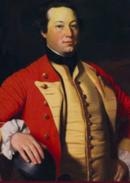



On Apr. 14, 1755 the govs. of the British provinces of Va. (Dinwiddle), N.C. (Dobbs), Penn., Md. (Sharpe), N.Y. (Delancy), and Mass. (William Shirley) meet in Alexandria, Va. with newly-arrived (with two regiments of regulars, but no horses and wagons) British CIC Gen. Edward Braddock (1695-1755) to plan a strategy to force the French from North Am., deciding on a 4-fold attack; after the Wagon Affair, where he personally travels all over Penn. to talk farmers into lending horses and wagons for them, 1.4K British and Am. forces under Gen. Braddock, led by volunteer staff officer Col. George Washington hack a road through the wilderness to take Ft. Duquesne (on the site of modern-day Pittsburgh, Penn.), reaching the Monongahela River (branch of the Ohio River) on July 8; meanwhile 2.1K troops from New England under Col. George Scott (-1767) and Maj.-Gen. John Winslow (1703-74) (great-grandson of Mayflower passenger Edward Winslow) sail from Boston up the coast on three warships and 33 transports to the Isthmus of Chignecto in late May, landing on June 3 at Ft. Lawrence in Nova Scotia, housing a few hundred British regulars, the combined force under Col. Robert Monckton (1726-82) (who is far younger than Winslow but a true Brit not a Yankee, hence is given command) marching for Ft. Beausejour (Beauséjour) on June 4, taking it from the French on June 16 and renaming it Ft. Cumberland (abandoning inferior Ft. Lawrence for it), followed on June 18 by Ft. Gaspereau near the mouth of the Gaspareaux River SE of Port Elgin, New Brunswick at Baie Verte on the Northumberland Strait, and on June 30 by St. John; by the end of June all of N Arcadia is under English control; on July 6 the retreating French from Fts. Beausejour and Gaspereaux reach Ft. Louisbourg (constructed in 1720-40), which is one of the most extensive forts in North Am. but is fortified for sea-based assaults only; on July 9 disregarding the warnings of his Am. officers that there might be an ambush, Braddock is surprised and defeated 7 mi. E of the fort at the Battle of the Monongahela (Wilderness) (Braddock's Field) by a smaller force of Indians and French in Indian costume, and Braddock and every officer except Washington are killed or mortally wounded, along with more than half of the force (500 killed, 500 wounded of 1.3K); the Indian chief orders his men to aim specially at 6'2" proud strutting Washington on his white horse, but he isn't wounded despite taking two bullets in his hat, four in his coat, and having two horses shot out from under him?; in 1770 Washington revisits the site, along with the Indian chief, who extols him, saying, "My rifles but for you knew not how to miss... You were protected by the Great Spirit and can never die in battle, and will become the ruler of a great nation"; Washington orders Braddock buried in the road and gives the funeral sermon as enemy forces approach, then has the wagons and cannons rolled over the grave to hide its location, and they retreat to Philadelphia after abandoning most of their artillery and supplies; 21-y.-o. Daniel Boone, who was born near modern-day Reading, Penn. and moved with his family to Holman's Ford on the Yadkin River in N.C. in 1753 serves with the Am. forces.


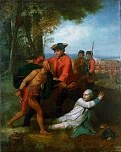

On July 28, 1755 the Acadian Expulsion (Great Upheaval) (1755-63) sees the British decide to forcefully relocate 6K French Acadians who won't swear allegiance to the British crown from Nova Scotia to British colonies from Mass. to S.C., first neutralizing their military threat with the Bay of Fundy Campaign; on Aug. 10 after Maj.-Gen. John Winslow (1703-74) leads his men to the Isthmus of Minas, they seize 400 unsuspecting Acadian men from Ft. Cumberland (Beausejour) and oversee their deportation by ship at Grand Pre, with Winslow calling it "very disagreeable to my natural make and temper"; over the next six years 11K Acadians are deported from Canada; Acadians don't begin arriving on the Golden Coast of La. until 1764 - kershaw? On Sept. 2 the Battle of Petticodiac near Hillsborough is a V for the Acadians and Mikmaqs led by French gen. Charles Deschamps de Boishebert (Boishébert) et de Raffetot (1727-97) over the British, who skedaddle after three hours and the loss of only one man (vs. 50 KIA and 60 injured on the Acadian side), allowing 200 families to escape deportation and resettle between Shediac and Cocagne. Santa Claus, rated J? On Sept. 8 the Battle of Lake George sees British forces under new supt. of Indian affairs N of the Carolinas and Ohio River maj. gen. Sir William Johnson (1715-74) (who as supt. of Six Nations affairs since 1744 was instrumental in getting them to fight against the French) score their first V over the French, led by Baron Ludwig August von Dieskau (Jean-Armand Dieskau, Baron de Dieskau) (1701-67), and the Indians, led by Mohawk chief King Hendrick, who is KIA; Dieskau is captured and his life spared by Johnson, who is made a baronet with a 5K pound grant and a 100K acre land grant, going on to establish a personal inland empire centered on New York's Mohawk Valley N of the Mohawk River, where he builds Johnson Hall, the site of Johnstown, N.Y.; in Sept. British army surgeon Richard Shuckburgh writes the verses to Yankee Doodle as he cares for the British wounded at the Battle of Lake George. On Sept. 21 the name of Ft. Lyman (founded as Ft. Lydius in 1731, then Ft. Lyman in 1755) S of Lake George and N of Saratoga Springs near Hudson River Falls (where Indians start carrying their canoes to the headwaters of Lake Champlain) is changed to Ft. Edward in honor of George III's brother Edward, duke of York and Albany.



On Mar. 3, 1758 Col. Lord Jeffrey Amherst (1717-97), aide-de-camp to the incompetent Duke of Cumberland is promoted by William Pitt to the rank of maj.-gen., with a commission to be English CIC at the siege of the formidable French fortress of Ft. Louisbourg on the St. Lawrence River; he arrives in May from the Elbe River in Halifax Harbor on a foggy day to take command of the British army, joining Cornish Adm. Edward Boscawen (1711-61) and brig. gen. James Wolfe (1727-59), then leading 12K British and colonial forces (plus 13K seamen) to French-held Ft. Louisbourg in Nova Scotia, which is defended by 3K French regulars, 1K militia, 2.6K seamen, and a large band of Indians, all under Chevalier Augustin de Drucour (1703-62), and falls on July 27 after a 7-week siege, becoming the final triumph of British power in North Am.; Lord Amherst's aide-de-camp Billy Amherst is sent to London with the news, causing a big celebration with fireworks and parades; Wolfe is promoted to maj. gen., and becomes the first to use the word "Yankee" (from the Dutch word "Janke" meaning Little John, slang for a pirate) to refer to New England soldiers under his command, with the soundbyte: "I can afford you two companies of Yankees, and the more because they are better for ranging and scouting than either work or vigilance."


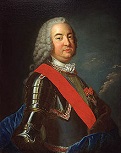


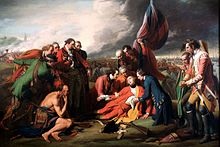
On Jan. 12, 1759 British Gen. Lord Amherst issues a gen. pardon for all deserters from Gen. Ambercromby's loser army if they rejoin by Mar.; he assigns the taking of Quebec to Gen. James Wolfe, Oswego and Ft. Niagara to brig. gen. Sir John Prideaux (1718-59), leaving Ticonderoga, the hardest nut to crack for himself. On June 26 a British force of 9K men under Gen. James Wolfe, supported by a flotilla under Adm. Sir Charles Saunders (1713-75) arrives and sets up HQ on the Isle of Orleans in the St. Lawrence River 5 mi. to the NE, beginning a siege on June 27 (ends Sept. 17), with Saunders positioning his ships so that French supplies and reinforcements are blocked, a winning strategy which gets him knighted in 1761 and appointed first lord of the admiralty in 1761. In June the British under Gen. Amherst arrive at Lake George with a force less than half that of Ambercromby's the year before, braving the summer heat and sailing up the lake on July 22 (using sails made from army blankets) into Lake Champlain, landing 3 mi. from star-shaped Ft. Ticonderoga, then slogging through bogs and thickets to the site of last year's massacre, finding a large grave with a copper plate reading, "Bury their generals here, like Oreb and Zeeb, Zebah and Zalmunna" (Book of Judges); the British force now incl. colonial Maj. Robert Rogers (Rodgers) (1731-95) and his Rogers' Rangers, Israel Putnam, Ethan Allen, John Stark, and Benedict Arnold; the 3K French are commanded by Chevalier Francois-Charles de Bourlamaque (1716-64), who follows prior orders from former French La. gov. (1743-52) and new gov.-gen. of New France (1755-60) Pierre de Rigaud, Marquis de Vaudreuil de Cavagnial (1698-1778) to abandon Ticonderoga with 2.5K men for the more defensible fortified Isle aux Noix (Nut Island), leaving the fort to Capt. Francois de Hebecourt and a garrison of 400; on July 26 they too evacuate, blowing up the powder magazine at 11 p.m., setting the barracks on fire, but the British move in and save the rest, taking the fort with a loss of 16 KIA and 51 wounded. On July 1 Sir John Prideaux leads part of his force (2.5K Brits plus 900 Iroquois) from Oswego to Ft. Niagara, avoiding French ships and landing 4 mi. E of it on July 6, surrounding it, then sieging and digging trenches toward the walls while bombarding it 24 hours a day, coming within 80 yards of the walls by July 24; after Prideaux is accidentally killed, his 2nd in command, Dieskau hero Sir William Johnson, 1st Baronet (1715-74) takes over; on July 24 a relief force of 1.3K French and Indians from the Ohio under Col. Ligneris are defeated 1 mi. S of the fort at the bloody Battle of La Belle Famille, and on July 25 French Capt. Pouchot surrenders Ft. Niagara and its garrison of 600 French troops. On July 24 Sir William Johnson (who succeeds Gen. Prideaux after being KIA by a shell fragment) captures Ft. Niagara; meanwhile brig. gen. Thomas Gage succeeds Prideaux, and fails to take Oswego by winter. On July 31 brash British Gen. James Wolfe attacks the French left flank positions on a rocky gorge at the Battle of Montmorency (Montmorenci) Falls (Gorge) (Beauport) near Quebec with 4K men, and is repulsed with heavy losses (210 KIA, 233 wounded vs 60 French casualties); Wolfe's brigadiers then counsel a landing on the N shore of the St. Lawrence River. In Aug. after the French abandon Ft. St. Frederic at Crown Point on Lake Champlain (15 mi. to the N), the British fortify it, and build Crown Point Military Road over Vt. hill country to Ft. Number Four (later Charlestown, N.H.), and prepare to take the Isle aux Noix, which is defended by four small French warships; meanwhile Amherst refuses spoils, accepting only the governorship of Va. on the condition he would never have to go there and could return to Kent and be with his mad wife. On Sept. 12 (night) 5K men under Gen. James Wolfe move downstream, landing 1.5 mi. SW of Quebec, then scale the steep 300-ft. Cape Diamond cliff at the confluence of the St. Charles and St. Lawrence Rivers, leading to the citadel of Quebec on the Plains of Abraham (named for landowner Abraham Martin) overlooking Quebec City; on Sept. 13 the British draw out the French under Gen. Louis Joseph, Marquis de Montcalm (1712-59) and decisively defeat them, then capture the city; both Wolfe and Montcalm die in the 15-min. battle which helps found Canada, making Wolfe a British hero.

On Nov. 6, 1769 English explorer Samuel Hearne (1745-92) begins his 1st voyage to the Arctic Ocean with a band of Cree and Chipewyan Indians, leaving the Seal River N of Churchill then returning on Dec. 11 after running out of food; on Feb. 23, 1770 he begins his 2nd voyage, followed in Dec. 1770 by his 3rd voyage (ends 1772). On July 16, 1771 after discovering copper in the Coppermine River Basin, in Canada, English explorer Samuel Hearne goes beddy bye, and at midnight his Chipewyan guide Matonabbee and his warriors sneak up on some unspecting Inuits and massacre them near Kugluktuk, Nunavut, becoming known as the Massacre of Bloody Falls - bloody, bloody and all that rot? On June 30, 1772 Samuel Hearne returns to Fort Prince of Wales on the mouth of the Churchill River on Hudson Bay, becoming the first Euro to visit the Arctic and return to tell about it, walking a total of 5K mi. and exploring 250K sq. mi. and proving that there is no Northwest Passage through the continent at lower latitudes.
On June 22, 1774 the Quebec (British North Am.) Act of 1774 is passed by the British Parliament, allowing for Roman Catholics to hold office, reestablishing old boundaries of Canada, extending Quebec's boundaries S to the Ohio River, and imposing Roman-based French civil law; this all angers Americans who fear that priest-ridden Roman Catholicism is being "established" there.

On Oct. 26, 1774 the Continental Congress approves the drafting of two letters, the first to be directed to Canada, requesting the Quebec Province to join the Americans in their stand of unity, the second, by "penman of the Am. Rev." John Dickinson (1732-1808) (richest farmer in Del.), a Declaration of Rights to the king; the Continental Congress adjourns on Oct. 26 after calling for a second Congress to meet next year on May 10 in Philadelphia - the ball's in your court, kingey?

On Sept. 17-Nov. 3, 1775 Am. Brig. Gen. Richard Montgomery (1738-75), serving under Gen. Philip Schuyler sieges St. John's (Jean) in Quebec, and brings about the surrender of 600 British troops after Col. Benedict Arnold leads the assault; on Nov. 13 Montgomery captures Montreal in Quebec.

On Dec. 31, 1775 after Col. Benedict Arnold (1741-1801) is appointed by Washington to lead a disastrous march through the Maine forests, the Battle of Quebec sees 1.2K Am. forces (900 regulars, 300 militia) under Gen. Richard Montgomery attack the Quebec City in Canada in a raging snowstorm, and are defeated by 1.8K British and Quebec forces under Sir Guy Carleton; Montgomery is KIA, Arnold is wounded and Daniel Morgan is taken POW along with 400 men; the Am. offensive in Canada is ended; Congress grants Gen. Washington's request to make Arnold (his favorite?) a brig. gen., holding Montreal (captured Nov. 13) until next June; "If Arnold had not been wounded, few doubt that Canada would be the 14th state." (Washington)

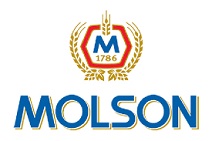
In 1786 Molson Brewery is founded outside Montreal, Canada by English-born Unitarian Freemason John Molson (1763-1836), going on to become the oldest brewery in North Am., and the 7th largest brewery in the world by 2005, when it merges with Coors to become the Molson Coors Brewing Co.

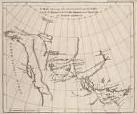
On June 3, 1789 Scottish-born North West Co. fur trader Sir Alexander Mackenzie (1764-1820), using charts provided by trailblazer (Conn. Yankee) Peter Pond (1740-1807) sets off from Ft. Chipewyan near Lake Athabasca in Alberta, Canada with 13 companions in three canoes, arriving at the Arctic Ocean, and discovering the Mackenzie River system; after traveling with French-Canadian voyageurs up the Mackenzie River, exploring W Canada to the Arctic, he had hoped the northerly river would turn W and end up in the Pacific Ocean, so he goes back to the drawing boards and plans another trip.
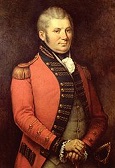
On July 9, 1793 the legislature of Upper Canada passes the Act Against Slavery, banning the importation of slaves and mandating that children born to female slaves will be freed upon reaching the age of 25; meanwhile on July 29 after visiting it in May and choosing it over London and Kingston, the name of Ft. Rouille (Rouillé) (modern-day Toronto) by the Don River in Ontario (founded 1750) is changed to Ft. York by British lt. gov. of Upper Canada #1 (1791-6) Gen. John Graves Simcoe (1752-1806), who makes it the capital of Upper Canada in 1796.
In 1804 after Canada grants 675K acres in 1784 to the League of Six Nations for help during the Am. Rev., and they turn around and sell 93K acres by 1798, the city of Waterloo in Ontario, Canada 60 mi. W of Toronto (modern-day pop. 104K/523K) is first settled by Mennonites from Penn., and in 1816 it is named after the 1815 Battle of Waterloo, attracting German settlers, who found the twin city of Kitchener (Berlin until 1916) in 1830 to the SE (modern-day pop. 233K/523K);; Waterloo is incorporated on May 27, 1857; in 1873 the city of Cambridge S of Kitchener at the confluence of the Grand and Speed Rivers (modern-day pop. 128K) is formed by the merger of Galt, Peston, Hespeler, and Blair.

In 1805 Hoosick, N.Y.-born explorer Simon Fraser (1776-1862) explores Canada west of the Rocky Mts., charting the future Canadian province of British Columbia and building the first Euro settlement there, helping establish the Canadian border at the 49th parallel; in 1808 he explores the Fraser River.

In 1811 Westminster, London, England-born Hudson's Bay Co. explorer and mapmaker ("the Stargazer") David Thompson (1770-1857) discovers Athabaska Pass over the Continental Divide in the Canadian Rockies from the Whirlpool River in Alberta to Wood River in British Columbia, which leads to the Columbia River and Pacific Ocean; he goes on to map 1.9M sq. mi. (4.9M sq. km) of North Am., becoming known as "the greatest land geographer who ever lived".
On Oct. 26, 1813 after U.S. gens. James Wilkinson and Wade Hampton lead a 2-pronged attack toward Montreal on Lake Champlain, they are turned back at the Battle of Chateauguay River, followed on Nov. 11 by the Battle of Crysler's Farm (near Montreal), causing them to abandon their Saint Lawrence Campaign, becoming "the Battle that Saved Canada" - is that like when Ford saved Chrysler?
In 1815 the Great Migration of Canada from Britain begins, with 800K immigrating by 1850, incl. English-speaking settlers to Upper Canada, Gaelic-speaking Highland Scots to Nova Scotia, and 35K Irish landing in Toronto in 1847-8.


A mini-Titanic 70 years early, caused by the uncanny British knack for arrogant refusal to provide backup equipment? In 1819 British Royal Navy officer Sir John Franklin (1786-1847) begins exploring N Canada by land from Hudson Bay E to the mouth of the Coppermine River, turning into a disaster after he falls into the Hayes River at Robinson Falls and is rescued by a member of his expedition, then loses 11 of his 20 men to starvation, causing them to be reduced to eating their own leather boots; they return in 1822. In 1825 British explorer Sir John Franklin (1786-1847) leaves on his 2nd expedition in the Canadian Arctic region, leaving Hudson Bay and reaching Great Slave Lake, then traveling 1K mi. down the Mackenzie River, becoming the 2nd Euro to reach its mouth on Aug. 16 before returning and wintering in Ft. Franklin on Great Bear Lake; meanwhile Sir William Edward Parry (1790-1855) sails W from the Atlantic Ocean in an attempt at a rendezvous, ending up frozen in place 900 mi. E, and Frederick William Beechley sails NE from the Bering Strait, reaching Point Barrow; next summer Franklin goes back downriver and finds the ocean frozen, giving up on Aug. 16, 1826 at Return Reef 150 mi. E of Beechey's Point Barrow, and returning to Ft. Franklin on Sept. 21; in 1821 Edward Parry begins a 2nd expedition to Baffin Bay (ends 1823) (first 1818). On May 19, 1845 after becoming lt.-gov. of Van Diemen's Land in 1837-43, Franklin begins an expedition to discover the elusive Northwest Passage in two British ships, HMS Terror (converted warship used in the War of 1812) and HMS Erebus, with a total of 129 crew; the well-financed expedition fits the ships with steel-plated hulls, locomotive-type steam engines and hot water heat, and enough food and rum for 3-5 years; too bad, the 20-ft. pack ice proves too thick, the water freezes in -100 F weather, the food cans are sealed with lead solder in them, and the 5 tons of lime juice loses its Vitamin C potency in a few years, causing scurvy; worse, there are no backup plans for escape on foot, and no sleds or hunting-fishing equipment; whalers spot the ships in Baffin Bay in the fall, the crew in good spirits as they head into the Arctic; after heading S through Peel Sound the ships get stuck in King William's Sound in Sept. 1847, find themselves in a 5-year stretch without any summer ice melting, and after three years where some resort to cannibalism, the survivors head south on foot, dying one by one of starvation and exposure; only a few graves are later discovered, along with a stone cairn containing a note recording Franklin's death on June 11, 1947; meanwhile the stupid British govt. refuses to send search expeditions until they're already dead, then disbelieves reports from Inuits that they were turning black from scurvy, frostbite, and lead poisoning, and in the "last resort" of cannibalism; after the British public is shocked by the loss, and Lady Jane Franklin spurs them on, search expeditions continue until 1859, leaving a mystery for 150 years until the pieces are put together - hello, mommy?


In 1829 Scottish-born British explorer Sir John Ross (1777-1856) of Scotland and his nephew Sir James Clark Ross (1800-62) begin a voyage in N Canada (ends 1833). In 1831 they discover the location of Earth's magnetic North Pole near Ellesmere Island in Canada; starting in 1904, the pole begins shifting NE at about 9 mi. a year, speeds up again in 1989, and by 2007 is heading toward Siberia at 34-37 mi. a year.

On Mar. 6, 1834 the city of York in Ontario, Canada (pop. 10K) on the NW shore of Lake Ontario (modern-day pop. 2.7M/5.9M) is incorporated as Toronto (Iroquois "tkaronto" = "place where trees stand in water"), with William Lyon Mackenzie (1795-1861) becoming mayor #1 next year.


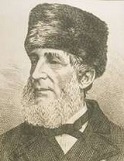

On Nov. 6, 1837 the abortive Canadian Revolts of 1837-8 (end Dec. 4, 1838) against Britain begin, sparked by attempts to institute U.S.-style govt., starting with the Lower Canada Rebellion (Patriot's War) (La Guerre des Patriotes) (ends Nov. 10, 1838), led by Louis Joseph Papineau (1786-1871), followed on Dec. 7 by the Upper Canada Rebellion, led by Toronto mayor William Lyon Mackenzie (1795-1861) (ends Dec. 4, 1838), sparked by attempts to institute U.S.-style govt.; on Nov. 25 the 2-hour Battle of Saint-Charles in the Richelieu Valley sees the Patriote rebels led by Thomas Storrow Brown (1803-88) defeated by the govt. of Lower Canada supported by the U.K. govt., causing Brown to flee to Fla. until he is granted amnesty in 1844 and returns to Montreal to work in a hardware store; on Dec. 14 the Battle of Saint-Eustache is a decisive British V over the Patriotes; in Dec. the USS Caroline is set on fire and sunk by Canadian troops while transporting supplies to Canadian insurgents over the Niagara River; British Whig John George "Radical Jack" Lambton, 1st Earl of Durham (1792-1840) is sent to Canada next year as gov.-gen. to investigate the causes, and in 1839 he pub. the Durham Report (Report on the Affairs of British North America), containing the soundbyte "two nations warring within the bosom of a single state", attributing Canada's problems to ethnic rather than economic problems, and recommending a united pip-pip British-run Canada with the goal of assimilating the Frogs, er, French into British culture while limiting their freedom, causing the Province of Canada to be created in 1841 from the former provinces of Lower Canada and Upper Canada; Papineau's nickname of "Bon Jean" is later transformed into Paul Bunyan?
On Feb. 10, 1841 the 1840 Act of Union (British North Am. Act) of the English Parliament (enacted July 1840) is proclaimed in Montreal, uniting the Provinces of Lower and Upper Canada as the Province of Canada (until July 1, 1867); on June 14 the first Canadian parliament opens.
In 1841 the streets of Canadian capital Toronto become the first to be illuminated by gas streetlights.
On Aug. 9, 1842 the Webster-Ashburton Treaty between Britain and the U.S. is signed, settling disputes over the Canadian border, taking away from the U.S. a strip claimed by Maine while ceding to them territory N of Vt. and N.Y. claimed by Canada, incl. the iron-rich Mesabi Range (Ojibway "missabe wudjiu" = giant mountain) in NE Minn.
On Sept. 24-25, 1844 the first-ever internat. cricket match is played between Canada and the U.S.
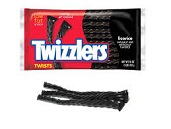
On July 14, 1845 gelatin-free Twizzlers brand licorice twists are introduced by Young and Smylie; in 1902 it merges with S.V. & F.P. Schudder and H.W. Petherbridge to form Nat Licorice Co., opening a plant in Montreal, Canada in 1908 and adopting the Twizzler brand name in 1929; in 1968 it is renamed Y&S Candies Inc.; in 1977 it is acquired by Hershey Co., who expands the line to cherry, strawberry, chocolate, and watermelon flavors, and experiments with shapes and sizes.
In 1845 the Museum of Civilization is founded in Gatineau, Quebec, Canada to display aboriginal folk art.
Having California in the bag, Oregon country shuffles to the top of the U.S. list? In May 1846 despite cries of "fifty-four forty or fight", and "all of Oregon or none", Pres. Polk gives the British a required one-year notice that the joint-occupancy agreement of Oregon is being terminated; Britain decides to give up the fight, and on June 15 Pres. Polk's secy. of state James Buchanan and British envoy Richard Pakenham sign the Oregon Treaty in Washington, D.C. setting the S border of Canada at the 49th parallel from the Rockies to the Pacific, with Vancouver Island remaining British, along with promises not to interfere with the U.S.-Mexican War; the Senate ratifies it on June 18, with the bitter-end expansionists outvoted by Southerners more interested in Texas, and northerners more interested in preserving British trade.
In 1847 about 214K Irish emigrate to the U.S. and Canada aboard ships, incl. White Star Liners; 30% die on board of dysentery, typhus, and malnutrition.
On Nov. 2, 1847 Anglo-Irish landowner Maj. Denis Mahon, who had paid $1K to deport 1K of his poor and starving tenants to Canada, 25% of which died en route, then kicked 3K of his remaining 12K tenants out of his property in County Roscommon in the Midlands of Ireland is murdered by unknown assailants; the Molly Maguires are suspected.
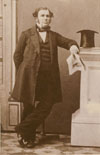
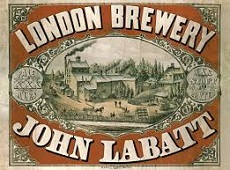
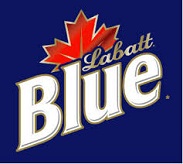
In 1847 Labatt Brewing Co. Ltd. is founded in London, Ont., Canada by Irish immigrant John Kinder Labatt (1803-66), going on to survive Prohobition as one of 15 breweries left in Canada, allowing it to grow into one of Canada's largest breweries; in 1945 it goes public; in 1951 it introduces Labatt Blue Pilsner Lager, named after the Canadian Football League Blue Bombers, becoming #1 in Canada until the late 1980s when Molson Canadian passes it up, then switching lead until 2004 when Budweiser becomes #1, which doesn't hurt it since in the 1980s it began brewing Budweiser in Canada, after which it becomes the best-selling Canadian beer on Earth; in 1974 it acquires Kokanee; in 1976-95 it becomes the majority owner of the Toronto Blue Jays ML baseball team; in 1984 it introduces the first twist-off cap in a refillable bottle; in 1989 they hire Canadian actress Pamela Anderson as their Blue Zone Girl; 1995 it is acquired by Interbrew.
In 1848 Nova Scotia becomes the first area in Canada to receive local self-govt.
In 1848 Roman Catholic Ottawa (Bytown) College is founded in Canada, becoming a univ. in 1866, and one of four North Am. pontifical univs. in 1899.

In 1848 John Humphrey Noyes (1811-86) of Brattleboro, Vt. founds the Oneida Community of Biblical Communist Perfectionists in Putney, Vt.; after being expelled, it settles in Oneida, N.Y. (until 1880); its members believe that Christ has already returned, and that true believers should renounce private property and marriage, although they are permitted "complex marriage", i.e., sleeping around, with conception controlled by the leaders using eugenic principles; the group establishes several successful manufacturing enterprises, which raise their capital from $67K to $600K by 1880, when they are again expelled, and most members quit, marry, and form the joint-stock Oneida Community Ltd., while the remainder move to Canada.

On Sept. 17, 1849 (Mon.) the Stony Monday Riot in Bytown (later Ottawa), Canada between Tories and Reformists over the planned visit of new (since 1847) British gov.-gen. (1847-54) James Bruce, 8th Earl of Elgin (1811-63) (son of the Elgin Marbles guy) results in 30 injured and one killed, after which an armed standoff on Sappers Bridge is ended by military intervention, and the pro-Elgin party prevails.
In 1849 Toronto becomes the capital of Canada (until 1851).

In 1849 Harriet Tubman (1820-1913) escapes from slavery and joins the super-secret Underground Railroad, which smuggles runaway slaves from Ky. and W. Va. N across Ohio to Detroit ("Midnight"), then across the Detroit River to Windsor, Ont., Canada ("Dawn"), then to other communities in Ont. incl. Elgin, Buxton, and Chatham; they allegedly "follow the Drinking Gourd", the pointer stars in the Big Dipper on the way N to the Ohio River.
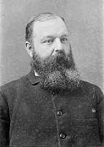
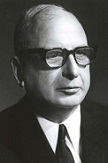
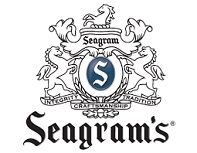
In 1857 Joseph E. Seagram and Sons starts as a distillery founded in Waterloo, Ont., Canada; in 1869 Canadian businessman Joseph Emm Seagram (1841-1919) becomes a partner, rising to sole owner in 1883; in 1924 Jewish Canadian businessman Samuel Bronfman (1889-1971) and his brothers found Distillers Corp. Ltd. in Montreal, Quebec, Canada, which booms during the 1920s because of Prohibition in the U.S. by shipping liquor to Saint Pierre and Miquelon off Newfoundland for transfer to U.S. bootleggers from N.Y., N.J. et al.; in 1928 Distillers Corp. acquires Seagram, surviving the end of Prohibition in 1933 by selling aged whiskeys and paying the U.S. govt. $1.5M to settle delinquent excise taxes, with Bronfman introducing quality whiskies incl. Chivas Regal and Royal Salute, creating Crown Royal in 1939 after mixing 600 samples to commemorate a visit to Canada by George VI and Queen Elizabeth; in 1982 it acquires a 32.2% share in Conoco, which calls in DuPont to rescue it, causing Seagram to end up with a 24.3% share of DuPont, growing to the largest single shareholder in 1995 with four seats; in 1986 it launches an ad campaign for its Golden wine coolers starring Bruce Willis, causing it to rise from #5 to #1 among distillers by 1988; in 1987 it takes over French cognac maker Martell & Cie for $1.2B; too bad, after rising to the largest owner of alcoholic beverages in the world, on Apr. 6, 1995 DuPont announces a buyback of its shares for $9B despite accounting for 70% of Seagram's earnings, after which Seagram begins a downhill slide despite acquiring MCA, owner of theme parks and Universal Pictures, along with PolyGram and Deutsche Grammophone; in 2000 the entertainment div. is sold to Vivendi, and the beverage div. (250 drink brands) to Pernod Ricard and Diageo; in 2002 Coca-Cola acquires its line of mixers.
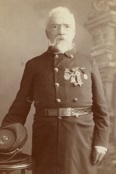



On Mar. 5, 1867 the Fenian Rising in Ireland by the secret Invincibles society begins in Dublin and Kerry, and is stopped by the Irish Constabulary; in Sept. Col. Thomas Joseph Kelly (1833-), English leader of the Finians is arrested, and a rescue attempt kills a policeman while attempting to shoot off the lock of the van; Kelly escapes to the U.S., but three Fenians (Allen, Larkin and O'Brien) are railroaded and hanged on Nov. 23 for it, becoming known as the Manchester Martyrs; on Mar. 29 after the Fenian invasion scares them into it, the British Parliament passes the British North America Act, creating the Dominion of Canada on July 1, with the E provinces of Ontario, Quebec, New Brunswick, and Nova Scotia uniting to offset the threat of a U.S. invasion from the S; eventually 10 provinces (Alberta, British Columbia, Manitoba, New Brunswick, Newfoundland, Nova Scotia, Ontario, Prince Edward Island, Quebec, Saskatechewan) and two territories (Northwest Territories and Yukon) join; Glasgow, Scotland-born Conservative Sir John Alexander Macdonald (1815-91) becomes PM #1 of Canada (until Nov. 5, 1873), and Templemore, Ireland-born Charles Stanley Monck, 1st Viscount Monck (1819-94) (gov.-gen. of the Province of Canada since 1861) becomes gov.-gen. #1 (until Nov. 14, 1868); to induce British Columbia to join, the Canadian Parliament guarantees a transcontinental railroad within 10 years, promising 25M acres of western land, a 20-year tax exemption, and other guarantees to six millionaires in exchange for $25M, creating the Canadian Pacific Railroad, which takes until 1885 to finish; Scottish-born Toronto Globe founder George Brown (1818-80) is instrumental in leading the Reform Party to push the confederation.
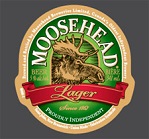
In 1867 Moosehead Brewery (originally the Army and Navy Brewery) is founded in Halifax, N.S., Canada by John Oland (-1870) and English immigrant Susannah Oland (-1886), becoming S. Oland, Sons and Co. in 1870, going on to become the oldest independent brewery in Canada; in 1886 her sons Conrad Oland and George Oland take over, changing its name in 1899 to Maritime Brewing and Malting Co.; too bad, the brewery is destroyed in the 1917 Halifax Explosion, and Conrad Oland is killed; in 1928 it moves to Saint John, New Brunswick; in 1931 the moose logo is adopted for the introduction of Moosehead Pale Ale, which is a hit, causing the co. name to be changed to Moosehead Breweries Ltd. in 1947; in 1978 Moosehead Lager is introduced in the U.S.; in 1982 it begins global sales; too bad, it lowers its U.S. price in the 1980s, ruining its rep as a premium beer and hurting sales; in Aug. 2004 a truck driver transporting 60K cans to Mexico absconds, and police track him down in Ontario; in Oct. 2004 200 cans are found at a marijuana growing operation in Doaktown, N.B., with some of the cans showing bear tooth marks, giving Moosehead internat. publicity.

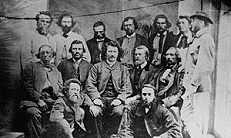

In 1868 the Canadian govt. takes over the territory of the Hudson's Bay Co., incl. the Red River Settlement, with a pop. of 12K, 10K of them Metis (mixed Indian and French or Scottish). On Dec. 1, 1869 Rupert's Land is transfered from Hudson's Bay Co. to the Dominion of Canada; after the Canadian govt. gives signs of transferring the territory of the Red River Settlement, half-Indian anarchist Louis David Riel (1844-85) leads the mixed-race Metis against them in the Red River Rebellion (Uprising) (Resistance) AKA First Riel Rebellion in Rupert's Land in Saskatchewan (modern-day Manitoba) (ends 1870), setting up a provisional govt.; Sir William Cornelius Van Horne (1843-1915), construction boss of the Canadian Pacific Railway, which had gone overbudget and stalled transports 4K soldiers to crush Riel on his unfinished railway in 11 days, resulting in renewed funding. On May 12, 1870 to deal with the pesky Metis, the Manitoba Act creates the Canadian province of Manitoba; on July 15 the British territories of Rupert's Land and the North-Western Territory are absorbed into Canada; on Aug. 20 after a military expedition under Col. Garnet Wolseley arrives at the Red River, the Red River Rebellion of Metis in NW Canada led by Louis Riel (begun 1869) is crushed, resulting in Riel fleeing to St. Joseph's Mission in Dakota Territory, and Manitoba entering the Canadian Confederation as a province; Hudson's Bay Co. transfers the Northwest Territories into the Canadian Confederation.
In 1875 the city of Calgary in Alberta, Canada (modern-day pop. 1.2M/1.4M) at the confluence of the Bow and Elbow Rivers 50 mi. E of the Canadian Rockies Front Range is founded as a Northwest Royal Canadian Mounted Police post; in 1883 the Canadian Pacific Railway (CPR) reaches the city, causing it to grow; on Nov. 7, 1884 it is incorporated as a town, and as a city on Jan. 1, 1894; in 1996 the CPR HQ moves there from Montreal.
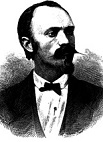
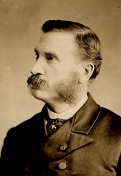
In 1880 Calixa Lavallee (Calixte Paquet dit Lavallée) (1842-91) and Sir Adolphe-Basile Routhier (1839-1920) pub. O Canada, composed for the Saint-Jean-Baptiste Day (June 24) ceremony, which becomes the nat. anthem of Canada; English lyrics pub. in 1906.

In 1883 Canadian geologist George Mercer Dawson (1849-1901) explores the Canadian Rockies, discovering 11,870 ft. (3,618m) Mount Assiniboine and 11,627 ft. (3,544m) Mount Temple, pub. a map in 1886 covering from the U.S. border to Red Deer Valley and Kicking Horse Pass; in 1887 he begins exploring N British Columbia to the headwaters of the Yukon River, pub. maps in 1897 just in time for the Klondike Gold Rush (1896-99), causing Dawson City in the Yukon to be named after him, along with Dawson Creek in British Columbia.

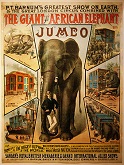
On Mar. 9, 1885 sharpshooter Captain Bogardus quits, and in Apr. Ohio farm girl sharpshooter "Little Missie" Annie Oakley (Phoebe Ann Moses) (1860-1926) (who asked him for a job last Dec. in New Orleans, and was turned down) joins Buffalo Bill's Wild West Show, becoming America's first superstar, with a whopping $50 a week salary, appearing before 150K people this year in 40 cities; on June 6 Sitting Bull also joins, and calls the 5-ft. girl "Watanya Cicilla" ("Little Sure Shot" in Sioux), and they both stay with the show for the next 17 years; on Sept. 15 10-ft.-7-in. (3.23m) (at the shoulders) Jumbo the (Circus) Elephant (b. 1860), the largest elephant ever in captivity (purchased from the London Zoo in 1882 despite protests from Queen Victoria et al.) is killed by an express train in Canada near St. Thomas, Ont., and for the next two seasons carts bearing his skeleton and hide lead the circus parade followed by elephants holding black mourning cloths in their trunks and wiping their eyes; his name goes into the English language.





Dudley Do-Right of the Mounties stinks himself up in White-Is-Right Saskatchewan? On Mar. 19, 1885 Louis David Riel (b. 1844) et al. form the French-speaking Provisional Govt. of Saskatchewan, with capital at Batoche; on Mar. 26 after the Canadian govt. rejects their French-style Seigneurial System that gives them strips bordering a river or lake in favor of 1 sq. mi. lots under the Dominion Land Survey, and sends 500 Mounties (North-West Mounted Police) to force them off their lands in favor of the Prince Albert Colonization Co., the North-West (Saskatechewan) Rebellion (Resistance) begins when military leader Gabriel Dumont (1837-1906) lead a few hundred mixed-race Metis, winning a V at the Battle of Duck Lake near Saint Laurent on Mar. 26; in Mar. Cree chief Poundmaker (Opeteca-hanawaywin) (Pitikwahanapiwiyin) (Pihotakahanapiwiyin) (1842-86) joins the rebels, looting Battleford, Sask. on Mar. 30, then defeating the Canadians in the Battle of Cut Knife (Hill) on May 2; meanwhile on Apr. 2 the Battle of Frog Lake (Frog Lake Massacre) sees Cree chief Big Bear (Mistahi-Maskwa) (1825-88) try in vain to stop his son Little Bear and Chief Wandering Spirit (Kapapamahchakwew, Papamahchakwayo, Esprit Errant) (b. 1845) from killing nine white men, then capture Fort Pitt on Apr. 15, after which the Mounties pursue Wandering Spirit for months before capturing him after a botched suicide attempt, and he is hanged in Batleford after a trial presided over by judge Charles Borromee (Borromée) Rouleau (1840-1901), who calls him "the greatest killer ever to walk on two legs in America"; on May 9-12 the Battle (Siege) of Batoche is a crushing D for the Metis, causing Riel to surrender on May 15 and Poundmaker to surrender on May 26; the Cree under Big Bear hold out until Nov. by staying on the move, after which Big Bear is put through a railroad trial and sentenced to three years at Stony Mountain Penitentiary in Manitoba, serving two years before being released due to failing health, then dying on the Poundmaker Reserve in Jan. 1888; Poundmaker serves 6 mo. of a 3-year sentence, dying shortly after release; on July 16 Riel is arrested for treason then hung on Nov. 16 in Regina despite nationwide pleas for amnesty, making him a martyr to French Canada, hardening divisions with English Canada; on Nov. 27 the 1885 Hangings at Battleford sees eight indigenous men hanged for their role in the North-West Resistance, becoming the largest mass execution in Canadian history (until ?); the Prairie Provinces come under English-speaking control; Dumont escapes to the U.S., and is granted amnesty next July and returns to Batoche; after transporting Canadian troops to quell the rebellion, the Canadian Pacific Railroad gets more political support and completion funding.
On Nov. 25, 1885 2,564 sq. mi. Banff Nat. Park (originally Banff Hot Springs Reserve, then Rocky Mountains Park) is founded in Alberta, Canada in the Rocky Mts. approx. 100 mi. W of Calgary, becoming Canada's first nat. park, featuring Icefields Parkway, Lake Louise, Moraine Lake, and Valley of the Ten Peaks; in 1890-1920 the Stoney (Assiniboine) tribe is removed to make way for wealthy white sportsmen and tourists.
On June 23, 1887 the Rocky Mountains Park Act, modeled on the U.S. Yellowstone Park Act is enacted by the Canadian parliament, establishing Rocky Mountains Park (later Banff Nat. Park).
In 1894 the Ontario Brewers' and Maltsters' Assoc. is founded in Canada; by next year there are 128 breweries in Canada, producing 17.6M gal., incl. 69 in Ontario, 21 in British Columbia, 19 in Quebec, 9 in Manitoba, 5 in Nova Scotia, 3 in New Brunswick, and 1 in Prince Edward Island; the only tax on breweries beside a $50/year license is 2 cents/lb. on malt, which began in 1890.


On Apr. 27, 1896 Sir Mackenzie Bowell resigns, and on May 1 seven days after parliament dissolves, Conservative Nova Scotia PM (1864-7) (Baptist) Sir Charles Tupper, 1st Baronet (1821-1915) becomes PM #6 of Canada 69 days before the election, which he loses on July 8 (shortest term as Canadian PM until ?) after the Liberals favor rights for French-speaking Manitobans; on July 11 Sir Henri Charles Wilfrid Laurier (1841-1919) becomes PM #7 of Canada (until Oct. 6, 1911), becoming the first Francophone Canadian PM, uttering the soundbyte: "Canada is free and freedom is its nationality", going on to work to establish Canada as autonomous within the British empire, even if it never becomes a melting pot like you know what down south.
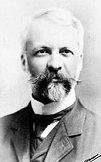
You work it girl, you got the power? On May 31-June 5, 1899 after Johannesburg Uitlanders (British migrant workers) complain to Queen Victoria about the Boers, the Bloemfontein Conference on Transvaal is held; the British decide to annex the Transvaal again, causing Paul Kruger to issue an ultimatum, which leads to the Second Boer War on Oct. 11 (ends May 31, 1902); Frederick Sleigh, hero of Kandahar replaces Sir Redvers Henry Buller as CIC of British military forces in South Africa; Kruger, being too old to take the field goes to Europe to attempt to gain support; French-Canadian nationalist Liberal MP (since 1896) Joseph Napoleon Henri Bourassa (1868-1952) resigns in protest against the sending of Canadian troops, calling PM Wilfrid Laurier a sell-out (vendu) to British imperialism, soon being reelected (untl 1907), going on to lead opposition to mandatory conscription during WWI and become the ideological father of French-Canadian nationalism; the first war to use smokeless powder in firearms.
In 1901 after toying with it in New Brunswick in 1856 and the Northwest Territories in 1874-91, Prohibition begins in Canada starting in Prince Edward Island (until 1948), followed by Alberta in 1916-23, Ontario in 1916-27, Manitoba in 1916-21, British Columbia in 1917-21, Newfoundland in 1917-24, New Brunswick in 1917-27, Saskatchewan in 1917-25, the Yukon in 1918-20, and Quebec in 1919, most in time to make big bucks servicing U.S. bootleggers.

In 1909 Toronto, Ont., Canada-born stage actress Mary Pickford (Gladys Mary Smith) (1892-1979) finds herself out of work on Broadway and signs up with D.W. Griffith's Biograph Co., impressing him so much that she soon increases her pay from $5 to $8 a week, and appears in 51 films this year, then moves to Calif. next year, where she still isn't listed in the credits but featured on sandwich boards outside the nickelodeons as "the Girl with the Golden Curls", "Blondilocks", and "the Biograph Girl", becoming the first Hollywood movie star, and the first to make $1M/year.

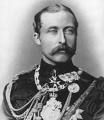
On Jan. 26, 1911 the U.S. and Canada announce the U.S.-Canadian Reciprocity Treaty, removing tariff barriers on both sides of the border; on July 22 it is ratified by the U.S. Senate despite opposition from wheat farmers and industrialists; too bad, Pres. Taft and others put their feet in their mouths by letting others suggest that annexation of Canada is next, causing Canadians to reject the treaty and defeat the Liberals on Sept. 21; on Oct. 10 Conservative opposition leader Sir Robert Laird Borden (1854-1937) of Novia Scotia becomes PM #8 of Canada (until July 10, 1920); meanwhile on Oct. 13 Prince Arthur, Duke of Connaught and Strathearn (1850-1942), son of Victoria and Albert becomes the first member of the British royal family to become gov.-gen. (#10) of Canada (until Nov. 11, 1916); his sister Luise had been the wife of gov.-gen. Lord Lorne.
On Oct. 13, 1917 331,934 men are called up by Canada, and only 21,568 report for military service, the remaining 310,376 applying for exemptions, most of which are granted; by Jan. 1, 1918 404,395 are called up, and 380,510 apply for exemptions, causing the Canadian Conscription Crisis of 1917, aggravating tensions between English Canadians and French Canadians; on Dec. 17, 1917 the 1917 Canadian federal election becomes the most bitter in Canadian history (until ?), with Liberals (mainly English Canadians) joining Unionist Robert Borden, who wins 56.93% of the vote and 153 seats, vs. 38.8% of the vote and 82 seats for Liberal Wilfid Laurier and his mainly French Canadian rump Laurier Liberals.

On July 10, 1920 Canadian PM #8 (since Oct. 10, 1911) Sir Robert Laird Borden resigns due to ill health, and Conservative Arthur Meighen (1874-1960) becomes PM #9 of Canada (until Dec. 29, 1921), becoming the first born after Confederation, and first from a Manitoba riding (until ?).


Canada goes for king and byng? On Aug. 2, 1921 British Field Marshal Julian Hedworth George "Bungo" Byng, 1st Viscount Byng of Vimy (1862-1935) becomes gov.-gen. #12 of Canada (until Aug. 5, 1926); on Dec. 29 William Lyon Mackenzie King (1874-1950) becomes PM #10 of Canada (until June 28, 1926) (3rd Canadian PM with Mackenzie in their name).
In Sept. 1925 after a customs scandal threatens a House of Commons vote to force him to resign, the King-Byng Affair starts when Canadian PM William Lyon Mackenzie King advises Canadian gov.-gen Lord Byng to dissolve parliament and call for a gen. election, which he refuses, asking Conservative Party leader Arthur Meighen to form a new govt., which he fails at, advising dissolution, which is finally accepted, becoming the first time in Canadian history that the gov.-gen. interferes in poltics, causing a reaction that establishes a tradition of non-interference and the Balfour Declaration of 1926; on Oct. 29 the 1925 Canadian federal election gives Arthur Meighen's Conservative Party 116 seats in Commons, vs. 101 for the Liberal Party of King, who loses his own seat (until Feb. 1926), but remains in office as PM, hoping for support of the Progressive Party and its 28 seats, informing Byng on Oct. 30, who tells him: "Well, in any event you must not at any time ask for a dissolution unless Mr. Meighen is first given a chance to show whether or not he is able to govern"; too bad, in Dec. Jacques Bureau, a King appointee in the Dept. of Customs and Excise is revealed to have taken bribes, causing Conservatives to point the finger at King after he replaces Bureau with Georges Henry Bolvin then recommends to Byng to appoint Bureau to the Senate, which alienates the Progressives.
On June 29, 1926 former PM #9 (1920-1) Arthur Meighen becomes PM of Canada again, then resigns on Sept. 25, and William Lyon Mackenzie King is reelected PM of Canada (#13) (until Aug. 6, 1930).
On Oct. 19-Nov. 23, 1926 the 1926 (7th) Imperial Conference is held in London; on Nov. 15 it unanimously adopts the 1926 Balfour Declaration, establishing the principle that the dominions are all equal in status as "autonomous communities within the British Empire", adopting the term "British Commonwealth".

On Oct. 23, 1935 Liberal leader William Lyon Mackenzie King (1874-1950) becomes PM #10 (#11) of Canada again (until Nov. 15, 1948) (1921-6, 1926-30), going on to mobilize Canada for WWII while boosting the economy and laying the foundations for the Canadian welfare state.

On Aug. 7, 1930 Conservative Party leader (since 1927) Richard Bedford "R.B." Bennett, 1st Viscount Bennett (1870-1947) (a descendant of immigrants from Conn.) becomes PM #11 of Canada (until Oct. 23, 1935), going on to become known as as an utter failure.
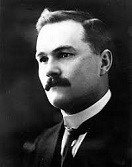
In 1930 the Dunning Tariff in Canada, sponsored by Charles Avery Dunning (1885-1958) raising duties on U.S. goods while giving preferential treatment to the U.K., becoming Canada's most drastic tariff revision since 1907.
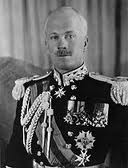
On Apr. 4, 1931 Vere Brabazon Ponsonby, 9th Earl of Bessborough (1880-1956) becomes gov.-gen. #14 of Canada (until Nov. 2, 1935), becoming the first appointed solely on the advice of the newly-independent Canadian govt., going on to revive the amateur Dominion Drama Festival in 1932 (until 1978).
On Dec. 11, 1931 the Statute of Westminster is passed, giving formal recognition to the autonomy of the dominions of the British Empire as worked out in the 1926 Imperial Conference, and chartering the British Commonwealth of Nations, consisting of the U.K., Australia, Canada, Irish Free State (until 1949), Newfoundland (until 1949), New Zealand, and the Union of South Africa (until 1961); India and Pakistan join in 1947 (Pakistan quits in 1972), followed by Ceylon (1948), Ghana (1957), Nigeria (1960), Cyprus (1961), Sierra Leone (1961), Jamaica (1962), Trinidad and Tobago (1962), Uganda (1962), Western Samoa (1962), Kenya (1963), Malaysia (1963), Malawi (1964), Malta (1964), Tanzania (1964), Zambia (1964), Gambia (1965), Singapore (1965), Barbados (1966), Botswana (1966), Guyana (1966), Lesotho (1966), Mauritius (1968), Nauru (1968), Swaziland (1968), Tonga (1970), and Fiji (1970); laws of the U.K. do not apply to any dominion unless it so requests - and we will cater any event?

On July 21-Aug. 18, 1932 the Imperial (British Empire) Economic Conference in Ottawa, Canada results in seven bilateral treaties with Great Britain, attempting to stifle any remaining vestiges of free trade in the British Commonwealth, leading to the resignation on Sept. 28 of the free trade Liberal members of the cabinet, who form an opposition led by Sir Herbert Louis Samuel, while the Liberals who stay are led by Sir John Allsebrook Simon, 1st Viscount Simon (1873-1954).

In 1932 Socialist Methodist minister and Canadian MP (1921-42) James Shaver Woodsworth (1874-1942) et al. found the Co-Operative Commonwealth Federation, which in 1961 becomes the New Dem. Party; in 1939 he becomes the only Canadian MP to vote against Canada's entry into WWII.
In 1932 the 2.3K-acre Internat. Peace Garden, half in Manitoba and half in N.D. at a point equidistant from the Atlantic and Pacific Oceans is dedicated to commemorate friendly U.S.-Canadian relations, becoming the world's longest unfortified border - 75 years later the U.S. builds a no-beaners-allowed fence along its Mexican border?
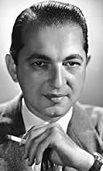
In 1933 the live "easy listening" music of Percy Faith (1908-76) of Canada becomes a hit on Canadian Broadcasting Corp.; in 1940 he moves to the U.S. and continues the hits.
In 1934 the Great Drought begins in the U.S. (ends 1937), creating the Am.-Canadian Dust Bowl of 1935-8, covering 150K sq. mi. (75%) of the Great Plains, incl. parts of Okla., Tex., Kans., Colo., and N.M., becoming the worst drought in 1K years; caused by the planting of wheat during WWI on former grazing land to make a quick profit?

On May 28, 1934 the Dionne Quintuplets (Annette, Cecile, Emilie, Marie, Yvonne) (all girls), the first known to have survived infancy are born to Elzire Donne at the family farm in Callendar, Ontario, Canada; too bad, the Canadian govt. takes them away in 1935 and makes them into a tourist attraction called Quintland, bringing in 3M people by 1943, more than Niagara Falls.
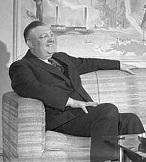
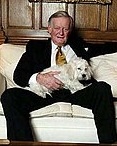
In 1934 Toronto-born Canadian businessman Roy Herbert Thomson (1894-1976) acquires his first newspaper, the Timmins Daily Press, followed by 18 more by the early 1950s; in 1959 he acquires the Kemsley Group of newspapers, largest in Britain, which incl. The Sunday Times, expanding to 200+ newspapers in Canada, the U.K., and the U.S. before buying The Times from the Astor family in 1966; in 1964 he is created 1st Baron Thomson of Fleet, losing his Canadian citizenship; he dies in London on Aug. 4, 1876 leaving his Thomson Corp. to his son Kenneth Roy "Ken" Thomson (1923-2006), who becomes the 2nd baron Thomson of Fleet and is allowed to retain his Canadian citizenship although he never takes a seat in the House of Lords, dying on June 12, 2006 as the richest person in Canada ($19.6B).

On Oct. 23, 1935 Liberal leader William Lyon Mackenzie King (1874-1950) becomes PM #10 (#11) of Canada again (until Nov. 15, 1948) (1921-6, 1926-30), going on to mobilize Canada for WWII while boosting the economy and laying the foundations for the Canadian welfare state.

On Nov. 2, 1935 after being appointed by George V on the recommendation of Canadian PM R.B. Bennett to replace the Earl of Beesborough, "The Thirty-Nine Steps" Scottish novelist-historian and Unionist politician John Buchan, 1st Baron Tweedsmuir (1875-1940) becomes gov.-gen. #15 of Canada (until Feb. 11, 1940).

On Nov. 15, 1948 Liberal Francophone Louis Stephen St. Laurent (1882-1973), longtime backer of PM William Lyon Mackenzie King becomes PM #12 of Canada (until June 21, 1957), going on to lead Canada in joining NATO in 1949 to fight Communism despite opposition from the Labor-Progressive Party and French canadians, turning Canada from an isolationist ex-colony to an active middle power.

On June 10, 1957 in Canada the Progressive Conservatives win the elections for the first time in 22 years, and on June 21 John George Diefenbaker (1895-1979) becomes PM #13 of Canada (until Apr. 22, 1963).

On July 22, 1960 the Quiet Rev. begins in Quebec with the coming to office of PM #19 Jean Lesage (1912-80) and his Liberal Party (until June 16, 1966), replacing the late Maurice Duplessis and his "duplessisme", which had held Quebec behind the times in "les annees noires" (the Dark Ages); Michel Brunet's "three dominant components of French Canadian thought" (agriculturalism, anti-statism, and messianism) are rejected in favor of secularist Socialism and nationalism, and Quebec goes from the least to the most taxed province.

On Apr. 8, 1963 after a bitterly anti-U.S. campaign by Progressive Conservative PM (since 1957) John G. "Dief the Chief" Diefenbaker, fueled by a secret U.S. document containing an unflattering reference to him in JFK's handwriting, elections in Canada give the Liberal Party a 129-seat majority in the House of Commons, but not an absolute majority; on Apr. 22 Liberal 1957 Nobel Peace Prize winner Lester Bowles "Mike" Pearson (1897-1972) becomes PM #14 of Canada (until Apr. 20, 1968), and on May 10-12 he meets with JFK in Cape Cod, and agrees to equip Canadian missiles with U.S.-supplied nukes, uttering the soundbyte "Wise cooperation across the border can enhance rather than diminish the sovereignty of each country by making it stronger and more prosperous than before"; his minority govt. goes on to strike a deal with two Conservative MPs to switch to the Liberals plus six defecting members of the Social Credit Party, and goes on to institute universal health care, student loans, the Canadian Pension Plan, the Order of Canada, and a new Canadian flag (over Diefenbaker's strenuous opposition, the flag that is), although he refuses to support the U.S. in its war in Vietnam - if the inventor of dynamite can award peace prizes?
On Mar. 1, 1965 a gas explosion in an apt. complex in La Salle, Quebec in Canada kills 28.
On Nov. 9, 1965 (5:16 p.m. EST) (17:16 9-11-65) the Great Northeast Blackout of 1965 occurs during rush hour (beginning at 4:44 p.m.) in an 80K sq. mi. area of Ontario, New York and New England (seven NE states and two Canadian provinces) inhabited by 30M as Sir Adam Beck Station No. 2 four mi. W of Niagara Falls on the Canadian side of the border trips a relay, and by 5:38 a domino effect completes the blackout; New York City goes black at 5:27 p.m.; mucho leche flows in the dark as people begin playing hot rabbit?; 62M phone calls are placed in New York City, the most ever recorded in one day; the blackout is traced to the Beck plant on Nov. 15; the blackout lasts up to 13.5 hours.

In 1965 Springhill, N.S., Canada-born pop-country singer Morna Anne Murray (1945-) releases her debut album What About Me, which features the tracks What About Me, There Goes My Everything, and The Last Thing on My Mind. Album #2 This Way Is My Way (Oct. 1969) features the hit track Snowbird (#10 country) (#8 in the U.S.) (first Canadian female singer earn a gold record in the U.S.). She follows with Sing High, Sing Low (1971) (#53 country) (#83 in the U.S.), A Stranger in My Place (1971) (#27 country) (#122 in the U.S.), Cotton Jenny (1972) (#11 country) (#71 in the U.S.), Danny's Song (1972) (#10 country) (#7 in the U.S.), A Love Song (1973) (#5 country) (#12 in the U.S.), You Won't See Me (by the Beatles) (1974) (#8 in the U.S.), You Needed Me (1978) (#4 country) (#1 in the U.S.) (first Canadian female singer), I Just Fall in Love Again (1978) (#1 country) (#12 in the U.S.), Shadows in the Moonlight (1979) (#1 country) (#25 in the U.S.), Broken Hearted Me (1979) (#1 country) (#12 in the U.S.), Daydream Believer (by the Monkees) (1980) (#3 country) (#12 in the U.S.), Could I Have This Dance (1980) (#1 country) (#33 in the U.S.), Blessed Are the Believers (1981) (#1 country) (#34 in the U.S.), Another Sleepless Night (1982) (#4 country) (#44 in the U.S.), A Little Good News (1983) (#1 country) (#74 in the U.S.), Just Another Woman in Love (1984) (#1 country), Nobody Loves Me Like You Do (w/Dale Loggins) (1984) (#1 country) (#103 in the U.S.), Time Don't Run Out on Me (1985) (#2 country), Now and Forever (You and Me) (1986) (#1 country) (#92 in the U.S.), and Feed This Fire (1990) (#5 country). She goes on to release 32 studio albums and 76 singles incl. 33 #1s, and sell 54M albums.

Congratuations a-wipe, don't screw the pooch? On Apr. 6, 1968 Canadian PM #14 (since Apr. 22, 1963) Lester Bowles Pearson announces his retirement, and on Apr. 20 liberal (pro gun control, abortion and gay rights) minister of justice Pierre Elliott Trudeau (1919-2000) is elected leader of the Liberal Party of Canada over 19 other candidates; on Apr. 20 he is sworn-in as Canadian PM #15 (until June 4, 1979), and on June 25 the Liberal Party wins a decisive V in nat. elections, giving Trudeau the first workable majority parliament since 1958; on July 5 he organizes an all-Liberal Party cabinet.



On Oct. 5, 1970 the October Montreal Crisis begins when British trade commissioner James Richard Cross (1921-) is abducted by terrorists of the left-wing Front for the Liberation of Quebec (FLQ), followed on Dec. 10 by Quebec labor minister Pierre Laporte (1921-70); the terrorists demand the liberation of 23 political prisoners and payment of a large ransom, which is refused; on Oct. 16 after a request by Quebec PM Robert Bourassa, Canadian PM Pierre Trudeau responds by invoking the War Measures Act in Quebec for 6 mo. (1st time in peacetime), sending 1K troops, while police arrest 450 suspected FLQ members; on Oct. 18 Laporte's strangled body is found in the trunk of an abandoned car; on Dec. 3 Cross is released after 59 days in captivity after the govt. provides an army plane for three kidnappers and four of their relatives to escape to Cuba; on Dec. 28 three suspects in the Laporte murder are arrested; after release, gay separatist leader Pierre Vallieres (Vallières) (1938-98) resigns, calling his separatist org. a "terrorist menace", and on Oct. 4, 1972 accepts a plea bargain of a 1-year suspended sentence for counselling political kidnapping, spending the rest of his life in Montreal's gay district.
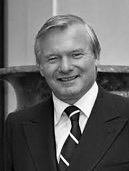
On Mar. 1, 1971 Progressive Conservative William Grenville "Bill" Davis (1929-) is sworn-in as PM #18 of Ontario (until Feb. 8, 1985), the most populous and industrialized province of Canada; in 2012 he is voted the 2nd best Canadian PM of the last 40 years after Peter Lougheed.

On Mar. 4, 1971 52-y.-o. Canadian PM #15 (1968-79) Pierre Elliott Trudeau (1919-2000) shocks his country by marrying 22-y.-o. "flower child" Margaret Sinclair (1948-), who utters the soundbyte "I want to be more than a rose in my husband's lapel" after he makes her convert to Roman Catholicism, going on to have son Justin Trudeau (1971-); too bad, they separate on May 27, 1977, with Pierre retaining custody of the children; she becomes a jet-setter and is seen dancing at Studio 54 in New York City in 1979, and they divorce in 1984.

In Dec. 1973 the Canadian rock band Bachman-Turner Overdrive cranked it up with the of their 2nd album Bachman-Turner Overdrive II, containing the hit Takin' Care of Business, followed in Aug. 1974 by their 3rd album Not Fragile, which features the hits You Ain't Seen Nothing Yet and Roll On Down the Highway.

On May 22, 1979 after failing to solve the country's economic and other problems, Canadian Liberal PM (since Apr. 20, 1968) Pierre Trudeau after 11 years in power loses to the Progressive Conservatives, whose High River, Alberta-born leader (since 1976) Charles Joseph "Joe" Clark (1939-) becomes PM #16 of Canada on June 4 (until Mar. 3, 1980), the youngest ever (until ?), and the first person to defeat Trudeau in a federal election; Trudeau retains his parliamentary seat.
On Nov. 13, 1979 former Calif. Gov. Ronald Reagan announces in New York City his candidacy for the Repub. pres. nomination, and proposes a North Am. Union (NAU) between the U.S., Canada, and Mexico.


Canada's has a quick turnover followed by a long mulroney? On Feb. 29, 1984 Canadian PM #15 (since Mar. 3, 1980) Pierre Elliott Trudeau announces his resignation after 16 years in office; on June 30 English-born finance minister John Napier Wyndham Turner (1929-) is sworn in as Canadian PM #17 until Sept. 17; on Sept. 4 after attacking a flurry of last-minute appointments of Liberals by Trudeau along with the failure of Turner to cancel them (who instead appoints even more), Martin Brian Mulroney (1939-) of Quebec (former pres. of Iron Ore Co.) and his Progressive Conservative Party win elections in a landslide, gaining their largest majority in history (211 of the 288 seats in the House of Commons, vs. 40 for the Liberals), on Sept. 17 he becomes Canadian PM #18 (until June 25, 1993), going on to cancel the nuclear power program and introduce the Canada-U.S. Free Trade Agreement and the Goods and Services Tax, but fails to stop the growth of the deficit while messing up his own patronage appointments through inexperience, alienating his own party.
On Oct. 4, 1987 the Canada-U.S. Free Trade Agreement (CUSFTA) is agreed to, and signed next Jan. 1, phasing out a wide range of trade agreements over a 10-year period, substantially increasing border trade; it is superseded in 1994 by the North Am. Free Trade Agreement (NAFTA).

On Sept. 6, 1990 the New Dems., led by Marion Boyd (1946-) defeat the Liberals in Ontario, Canada to become the province's first Socialist majority govt., and the first E of Manitoba led by the New Dem. Party.

On Apr. 2, 1991 Rita Margaret Johnston (nee Leichert) (1935-) becomes the first woman PM (#29) of Canada (until Nov. 5) after British Columbia's Social Credit Party selects her to replace William N. Vander Zalm, who was ousted for violating conflict of interest guidelines; she is voted out of office on Nov. 5.
On Oct. 28-Nov. 4, 1991 the 75 mph Perfect Storm (Halloween Nor'easter of 1991) absorbs Hurricane Grace and rocks the U.S. E coast, killing 13 and causing $200M damage; on Oct. 28 the swordfishing boat Andrea Gail out of Gloucester, Mass. sinks 180 mi. NE of Canada's Sable Island, becoming the basis of the 2000 Sebastian Junger film "The Perfect Storm".

On Jan. 22, 1992 Space Shuttle Discovery mission STS-42 blasts off, carrying seven astronauts incl. physician Roberta Lynn Bondar (1945-), who becomes the first Canadian woman in space.

On Apr. 20, 1993 Windsor, Ont., Canada-born country singer-songwriter ("Queen of Country Pop") Shania (Ojibwa "on my way") Twain (Eileen Regina Edwards) (1965-) releases her debut album Shania Twain (#67 country), which flops until she becomes famous, then sells 1.4M copies; it features What Made You Say That, Dance with the One That Brought You, and You Lay a Whole Lot of Love on Me. Album #2 The Woman in Me (Feb. 7, 1995) (#1 country) (#5 in the U.S.) (20M copies) features Any Man of Mine (#1 country) (#31 in the U.S.), Whose Bed Have Your Boots Been Under? (#11 country) (#87 in the U.S.), The Woman in Me (Needs the Man in You) (#14 country) (#90 in the U.S.), (If You're Not In It for Love) I'm Outta Here! (#1 country) (#74 in the U.S.), You Win My Love (#11 country), No One Needs to Know (#7 country), Home Ain't Where His Heart Is (Anymore) (#28 country), and God Bless the Child (#48 country) (#75 in the U.S.). Album #3 Come On Over (Nov. 4, 1997) (#1 country) (#2 in the U.S.) (40M copies) (best-selling country music album) (best-selling studio album by a female act); incl. Come On Over (#6 country) (#58 in the U.S.), Love Gets Me Every Time (#1 country) (#25 in the U.S.), Man! I Feel Like a Woman! (#4 country) (#23 in the U.S.), Don't Be Stupid (You Know I Love You) (#6 country) (#40 in the U.S.), You're Still the One (#1 country) (#2 in the U.S.), and From This Moment On (#6 country) (#4 in the U.S.). Album #4 Up! (Nov. 18, 2002) (#1 country) (#1 in the U.S.) (20M copies) features Up! (#12 country) (#63 in the U.S.), I'm Gonna Getcha Good! (#7 country) (#34 in the U.S.), She's Not Just a Pretty Face (#9 country) (#56 in the U.S.), and Forever and for Always (#14 country) (#57 in the U.S.). She goes on to release four studio albums and 35 singles and sell 85M records, becoming the best-selling female artist in country music history.


On June 25, 1993 the long recession and discontent over the free-trade agreement causes Canadian PM #18 (since Sept. 17, 1984) Brian Mulroney to resign, and Progressive Conservative Party defense minister #30 (since Jan. 4) Avril Phaedra Douglas "Kim" Campbell (1947-) becomes the first woman PM (#19) of Canada (until Nov. 4); in Oct. the Liberal Party wins big, and on Nov. 4 Joseph Jacques Jean Chretien (Chrétien) (1934-) becomes Canadian PM #20 (until Dec. 12, 2003).
On Jan. 4-10, 1998 after a low pressure system stalls over the Great Lakes, pumping warm moist air from the Gulf of Mexico into the St. Lawrence Valley, the Great North Am. Ice Storm of 1998 sees five successive ice storm hit a narrow swath of land from E Ontario to S Quebec, New Brunswick and Nova Scotia, bordering U.S. areas from N New York to C Maine, damaging trees and electrical infrastructures, leading to long-term power outages that affect millions, causing the largest deployment of Canadian military personnel since the Korean War (16K incl. 12K in Quebec and 4K in Ontario).
On Dec. 12, 1999 Palestinian militant Khadr Abu Hoshar and 15 others are arrested for the 2000 Millennium Attack Plots to bomb LAX scheduled for Jan. 1, 2000; on Dec. 14 Algerian Canadian immigrant Ahmed Ressam (1967-), AKA Benni Noris AKA the Millennium Bomber is arrested at Port Angeles, Wash. carrying explosives, and is sentenced to 22 years in prison.

On July 27, 2002 Canadian-born Pakistani descent Muslim Omar Ahmed Khadr (1986-) is captured after a 4-hour firefight in Ayub Kheyl, Afghanistan after killing U.S. soldiers, becoming the youngest inmate at Gitmo, and getting latched onto by the U.N. and Western liberals as a child soldier, resulting in the Obama admin. accepting a plea bargain in Oct. 2010 that lets him walk in as little as a year.

On Dec. 12, 2003 PM #20 (since Nov. 4, 1993) Jean Chretien steps down in favor of new Liberal Party leader and former finance minister #34 (1993-2002) Paul Edgar Philippe Martin (Paul Martin Jr.) (1938-), who becomes Canadian PM #21 (until Feb. 6, 2006).

On Jan. 23, 2006 after a scandal involving misappropriation of govt. funds by the Liberal Party, Conservatives win 36% of the vote in Canadian parliamentary elections, ending 12 years of Liberal Party rule; Paul Martin resigns, and on Feb. 6 Conservative Party of Canada leader Stephen Joseph Harper (1959-) becomes Canadian PM #22 (until Nov. 4, 2015), going on to have improved relations with the Bush admin.
On Oct. 16, 2013 Canadian Muslim Mohamoud Jimale (1968-) is arrested for leaving a suspicious package on Parliament Hill in Toronto ahead of a speech by PM Stephen Harper.
On Apr. 1, 2014 protester Eric Brazau is sentenced to 9 mo. in jail by Ontario judge S. Ford Clements for distributing flyers criticizing Islam, plus shouting "in a tone of voice that suggested he was very angry and had little interest in debate", causing a firestorm of controversy about Canada kowtowing to Sharia; fellow protesters dressed in a burqa et al. are not prosecuted?; one had a sign saying "Expose jihad with free speech or die".
On Oct. 20, 2014 Muslim convert Marin Couture-Rouleau (1989-) runs down two Canadian soldiers in his car in Quebec before rolling, er, running, chasing police officers with a knife, and being shot; one soldier is killed.
In Apr. 2015 the Clinton Uranium Deal surfaces, in which Canadian co. Uranium One gives $145M to the Clinton Foundation then gets U.S. State Dept. approval for Russia to acquire it, giving them ownership of 20% of U.S uranium resources.
On July 15, 2015 Canadian online adultery service Ashley Madison announces that hackers stole all of its 30M customers' data and is threatening to post it online if it doesn't shut down; on Aug. 18 they carry out their threat; on Aug. 24 after extortion attempts and suicides, Canadian police hold a press conference in Toronto, Ont., offering a $500K reward for info. on the hackers.

On Oct. 19, 2015 2015 Canadian federal elections are a big V for the Liberal Party (39.5%) under Justin Pierre James Trudeau (1971-) (son of former PM Pierre Trudeau), who win 184 of 338 seats in Parliament; Stephen Harper's Conservatives (32%) win 99 seats; Trudeau becomes Canadian PM #23 on Nov. 4 (until ?), immediately announcing that Canada will pull its RCAF CF-18 Hornets out of Iraq.
On June 3, 2017 Allah-Akbar-screaming Canadian Muslim Rehab Dughmosh (1985-) begins swinging a golf club at employees of Cedarbrae Mall in Scarborough, Toronto, Ont., Canada, then pulls out a large knife before being subdued by the employees; at her first court appearance she swears allegiance to "the leader of the believers, Abu Bakr al-Baghdadi" of ISIS.
On June 21, 2017 the 2017 Bishop Internat. Airport Incident at Bishop Internat. Airport in Flint, Mich. sees Allah Akbar-shouting Tunisian-born Canadian Muslim Amor M. Ftouhi (1967-) stab airport police officer Lt. Jeff Neville in the neck after he fails to purchase a gun at a gun show; on Mar. 21, 2018 he is charged with committing an act of terrorism over nat. boundaries.
On Feb. 21, 2018 Canadian PM Justin Trudeau visits India, incl. the Golden Temple of Amritsar, wearing Indian garb.
On Mar. 28, 2018 despite a personal appeal by Canadian PM Justin Trudeau, Pope Francis refuses to apologize for the Roman Catholic Church role in the Canadian system that forced generations of indigenous children into boarding schools, which was called cultural genocide by a 2015 nat. Truth and Reconciliation Commission.
On June 8-9, 2018 the G7 Summit in Charlevoix, Quebec, Cana sees cock of the rock Pres. Trump call for Russia to join and make it the G8, then blast Canadian PM Justin Trudeua (known for his babyish face with fake eyebrows) as "meek and mild" after refusing to sign the leftist G7 Communique (promising action on progressive taxation, global warming, women's equality et al.) and getting a parting shot from him.
On May 24, 2018 (10:30 p.m. local time) an IED set by two men explodes during two birthday parties at the Bombay Bhel Restaurant in Mississauga (near Toronto), Ont., Canada, injuring 15.
On June 19, 2018 after it passes the House of Commons in Nov., the Canadian Senate votes 52-29 to pass Bill C-45 (the Cannabis Act), legalizing marijuana, becoming the 2nd country after Uruguay in Dec. 2013.